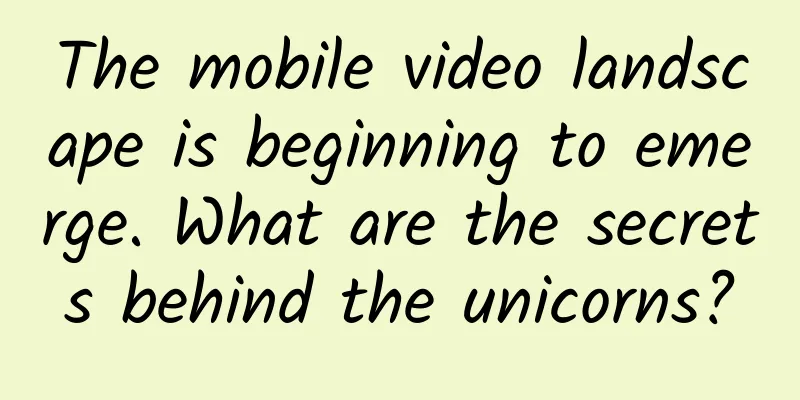Using two cases, analyze how UI designers can avoid user dissatisfaction and confusion

|
Our products often bring some negative feelings and usage confusion to users. Reducing and eliminating these problems can greatly improve the user experience. Case 1. User confusion during operationI believe that everyone has encountered this situation when designing. There are multiple entrances in a product pointing to the same interface. Is this a product trick or is there another meaning? Many people have different opinions on this design. This design is like a cunning rabbit with three burrows. In the product, traffic can come in from different entrances and go to multiple different exits, or it can enter the same place from different entrances. Some people may think that if there are multiple entries in an interface pointing to the same interface, there will be problems:
Let's take a look at an example. Below is a previous version of the Deppon app, which has been optimized. From the screenshot, we can see that the query and delivery functions at the top of the page are repeated with the separate interface functions of the bottom tab, and my express delivery can also be directly displayed at the bottom of the homepage. My express delivery can currently be viewed from three entrances: the top of the homepage, the bottom of the homepage, and the personal center. Through this case, we found that these sections and functions are indeed too repetitive, and there is no distinction between scenarios. This design confirms the above two statements, reducing user efficiency and increasing selection costs. And from a business perspective, there is no difference in goals. However, we must also analyze the problem from multiple angles. Does having multiple entrances to the same interface only have disadvantages and no advantages? Obviously not. Let’s look at a few more cases.Below is a card for product reviews. After actual testing with my hands, I found that clicking on any area with content on this card will jump to the interface of all reviews. Will this design logic cause the same problem as in the above case? The answer is no. The design logic here is not as simple as the scenario above, but users can have choices when facing different demand scenarios. I wonder if you have noticed a problem. In the above Debon case, you may have questions about the two entrances, but not when evaluating the card. This card contains 4 different scenarios:
So even if you finally reach an interface, for the user it starts from an independent starting point. Looking back at the above case, you will find that I just want to send something, and there are two entrances here. How do I choose? Moreover, Koala actually makes a distinction between different content clicks. Let's look at another case. There are two entrances to the homepage of Shell's map search, one in the navigation bar and one in the category. Will the duplication here cause the problem mentioned at the beginning? First of all, we can see that Shell has a lot of businesses, so much so that in this category, a scroll indicator is needed to display the remaining content. You can also think about it. In this interface, will there be two map searches with different starting points for house searches? I personally think it is debatable. First of all, map search is a very core and high-frequency function in real estate apps, and its attribute is a "tool". So I think there are three reasons why he put a map to find a house in the card.
But there are some subjective factors in these. If the map search function in the card is really removed, I think the impact may not be very big. Some friends may want to say that it is for diversion, but the current diversion is mainly to let the traffic flow to where it should go to generate actual value. In addition to the above three reasons, it seems a bit repetitive. Let’s look at another example, the Xiaolu Tea app. The order now button on the homepage and the menu label at the bottom lead to the same interface, so why repeat them? What he is actually considering here is that he doesn’t want users to buy directly after entering. Why not buy directly? He should want to establish his own brand personality, meet more consumption scenarios and value-added services, such as ordering milk tea for others, promoting surrounding cups and cooperative products, and recommending the latest milk tea. If there is only a menu, the product will appear more like a tool, it will be difficult to highlight the brand, and it will not be very helpful for business growth. Some students may say that this interface is just the "wishful thinking" of the product, I just need to order milk tea, and multiple entrances will only cause me trouble. So his design logic here is that when users open the app, they first locate the menu, not the homepage. Therefore, we still need to consider different scenarios and goals when multiple entrances are used to access the same target. If there is no business goal to support it and no change in the user scenario, then this repeated entrance is useless. Finally, I have a small question to think about: NetEase Cloud Music’s “playlist” is also repeated on the homepage. Do you know why it has a repeated entrance here? Case 2. User dissatisfaction during useAn excellent product or a qualified product can bring a pleasant experience to users. What is experience? In plain words, it means that it is comfortable, natural and efficient to use. Another bottom line is not to let users have negative emotions caused by the product, such as not informing users of solutions when the product makes a mistake, not being able to help correct users’ mistakes in time, not having secondary confirmation for high-risk operations, etc. Depending on the severity of the negative emotions, some users can be lost directly. Unfortunately, I encountered such an experience. At that time, I was assigning some homework exercises to my classmates to experience the advantages and disadvantages of some products and provide solutions. I also downloaded this cultural and antique app and experienced the function module of "Extremely Fast Looting". Picking up a bargain: A jargon in the antique circle, which means buying a very valuable antique at a very cheap price without the seller knowing about it. It is a rare occurrence, so the implication is that it is rare and you are lucky. Entering the live broadcast room, the merchant was shouting hard. There was a button at the bottom of the page to add one hand, which was similar to an auction. The highest bidder won. So I clicked the button with a try-it attitude, because I expected the product to confirm with me again whether to increase the price. As a result, the price increase was successful. What happened? In the end, no one continued to increase the price after the auction ended. In actual scenarios, users may accidentally click a button due to an error. There are many such scenarios and situations. Even if it is not an error, providing a second confirmation dialog box can avoid such embarrassing situations, because users like to click around in the product, and you are like burying a landmine here. If it ended here, I actually don't feel the need to complain. The problem is that when I took the order but hadn't paid yet, the merchant in the live broadcast room started calling my name: Congratulations, brother xx, you bought our product, you can go and pay. After dozens of times, I was embarrassed and directly exited the backstage. It felt like a group of viewers watching a newbie who was cheated. When I opened the system after 10 minutes, it prompted that the product had failed to be sold and the default points had accumulated. At this point, some people may say, since you took the photo yourself and didn’t pay, of course you will be punished. So I did some serious research and found that the rules of quick bargain hunting and auction are not the same. This product and its competitors actually have auction sections, where there are operations that require user confirmation, and auction rules are given below the operations, indicating that bidding means agreeing to the auction rules. However, there is no such explanation in the section of this product for quickly picking up bargains. Since such instructions and agreements are not displayed in advance, users do not know that there are such rules. I compared it with competing products. In fact, in the scenario of live streaming with goods, the bidding process is still different. Both parties did not explain the rules, but competing products still gave a step of bidding after selecting a bid. In the end, I was even blocked by the merchant, but I was still given an entrance to complain about the merchant. My thoughts at the time:
So I would like to share my opinion on this: 1. Trading is one of the functional attributes of a product platformTransaction is one of the functional attributes of the product platform. We need to prioritize the value of the product to users, and then discuss the rationality of the transaction. In this process, we must inform users in advance of the misoperation behaviors that users are likely to encounter and the costs of placing orders and paying for them. We also found in Nielsen's usability principles that if users accidentally make mistakes, we should try to reduce the costs caused by these mistakes as much as possible, and at the same time, we should clearly inform users before they make mistakes, so as to control risks in advance. Therefore, when you register or log in, the product will ask you to agree to a user agreement, informing you that we will save your data and some information related to you. If you do not agree, you will not be able to continue to experience the product. This is a contract. Similarly, if you want users to participate in auctions in this product, you need to let users know the risks of this operation before entering this section or after users click the button, and obtain their consent. This is not to allow users to increase the price directly, which will result in users being deducted points for no apparent reason and being blacklisted by the merchant. This is the same as when you go to Thailand and your friend takes a photo of you and a person holding a lizard on the street, and someone comes to ask you for money. For normal offline auction processes, the organizer will also inform the participants of the relevant rules and processes, and let the customers confirm the agreement in advance about the risks and problems. Therefore, in product transactions, the symmetrical relationship between user and product information must be met first, and information transparency and contract fairness must be maintained. Rules, constraints, and conditions are the prerequisites for users to use your products and one of the criteria for measuring experience feedback. 2. Value to merchants and productsMerchants hope to have more traffic to expose their products. The low price of bargain products can quickly attract a large number of users. For example, a wooden walnut carved pendant for 8 yuan, etc. The product creates an atmosphere of rush buying and limited time to attract users to place orders and lower the threshold for user participation. So, is the direct increase in price a good strategy to lower the threshold? I don’t think so. Lowering the threshold does not mean that you can directly bid, but it requires increasing the user’s trust in the product. The target users of this module for picking up bargains quickly are almost all novice users, because experienced players will not look down on it and will not buy it, and experienced players can also tell the difference and understand its value. Therefore, when facing these novice players who have not learned about cultural and artistic products, they are cautious in their hearts. Some people may think, is it worth considering these few or even dozens of dollars? Of course, in this scenario, the herd mentality is very obvious. Everyone thinks it is very cheap, but no one is bidding. How come no one wants this bargain at just a few dollars? Most people think such a cheap item must not be very good. Is the shipping fee ridiculously expensive? Is there someone behind the scenes bidding up the price? If no one bids, I will wait and see. The more people watch, the harder it is to close a deal. Another possibility is that whether I can sell the things or not is not important, what is important is that someone came to see them, and these scraps are used to give back to the fans of the live broadcast room, which is just a window, and the truly profitable things are in the window. So the "picking up leaks" here is just a gimmick to attract traffic. People always don't value things that are too easy to get, let alone a few dollars of small things. So I personally think it is inappropriate to directly take a photo of this interaction. No matter which of the above situations, there is no way to lower the threshold. In fact, this kind of "cleverness" will make users less trusting of the product and users. Distrust of products is a big problem. Especially for a platform, fake transactions, inferior products, and shoddy products are fatal. 3. The value of cultural relicsI actually played with cultural relics for a while. Influenced by my father-in-law, I liked to play with bracelets, jade, etc. I often watch some treasure appraisal videos on Tik Tok, which are very interesting. The value of a cultural play lies in its appearance, rarity, degree of playing, public acceptance, historical background, craftsmanship, etc. Therefore, it is not a commodity with equal utility in everyone's mind. For the same piece of jade, its quality is average, but the pattern is very unique. In fact, the psychological value expectations of the buyer and seller will be very different. It is not as transparent and easy to calculate as buying electronic products. Some people play with these because they think it is destined for them, it can bring me wealth and luck, and help me ward off evil spirits. It depends on the eye. It is not a useless stone on the roadside that can be picked up and thrown away at will. In other words, if we use some emotional copywriting to make users like this cultural plaything when they place an order, can we also promote transactions with a high probability? 4. Rules of the cultural relics circleI believe that many friends who play with cultural relics know that there are some unwritten rules in the circle of cultural relics. Perhaps it is because these rules appear in online products. Counter-offer means to make an offer, and to make an offer means to buyIn the cultural relics circle, if you don't want to buy, don't bargain. If the seller agrees to your bargain, then you have to buy it. This represents your personal credibility and moral character. Therefore, there are many gaps between the cultural relics circle and Internet users that need to be bridged step by step. We cannot simply require Internet users who have just entered this circle to follow the industry rules of the offline circle. This requires everyone to work together to create a good culture and rules for the cultural relics circle, rather than simply copying and pasting them and raising the threshold. Don't ask about other people's costsThere is no actual cost for cultural relics. Someone might spend 10 yuan to buy something worth 10,000 yuan, or someone might spend a huge amount of money to buy something that is not worth the price. So it is not good for anyone to know the cost, and others will not tell you. Others remain silent when tradingThe value of cultural relics is different in everyone's mind, so the monetary value is also different. When others are asking for prices or bargaining, we should not express our opinions and ideas no matter what. Of course, there are other rules that I won’t describe one by one. Regarding these three rules, there are actually conflicts in Internet products. For example, if you buy a certain cultural relic, as soon as you bid, others say that it is not worth the price at all. Or you make an offer but don’t want to buy it anymore. These rules that were originally not allowed in the cultural relic circle are really difficult to require users on the Internet, because transactions on the Internet are not necessarily what you see is what you get. What is displayed may be one thing, and what you receive may be another thing. Well, that’s all for today’s sharing. Do you have similar problems when using the product? |
<<: Learn this method well, you can solve 80% of Logo design problems
Recommend
It's not easy to be an astronaut! The latest study confirms that space flight may cause permanent bone loss in 20 years
It's cool and proud to break out of the earth...
BlackBerry's swan song - Priv phone will be launched this week
On November 3, according to foreign media reports...
When you reach middle age, you need to "quit" these things to cut off the path of cancer cells.
When people reach middle age, they need to "...
How to choose the release time for short videos? When is the appropriate time period to publish the work?
There are 24 hours in a day. When is the best tim...
How much does it cost to develop the Changde Shoes and Boots mini program? How much is the price for developing a Changde shoe and boots mini program?
How much is the quotation for Changde footwear de...
Airbnb’s Growth Case Study
Airbnb, Chinese name:爱Airbnb , is a service websi...
Google is fixing an issue with Android's WebView component causing app crashes
[[389179]] Recently, many users have complained o...
Why did Li Xiang of CHJ Automotive build a range-extended hybrid car?
Recently, Li Xiang of CHJ Automotive Group offici...
Everyone wants to make the next "The Debaters". Can it be done by moving the satellite TV's super variety show to the Internet?
There are more and more super variety shows movin...
How much does it cost to develop Foshan’s fresh food WeChat mini program and a fresh food mall WeChat mini program?
With the continuous advancement of the Internet, m...
Experience using the Chinese version of Sony Z2
I have been constantly changing devices from Noki...
The "aging but not aging" brain: Your cognitive function has not reached its peak at the age of 70
Written by: Liu Fang Editor: Kou Jianchao Layout:...
Start a course - Artificial Intelligence Core Competencies Phase 7 - NLP Major
Kaikeba - Artificial Intelligence Core Competenci...
Why don’t you know how to promote your products?
Founders often underestimate the importance of hir...









